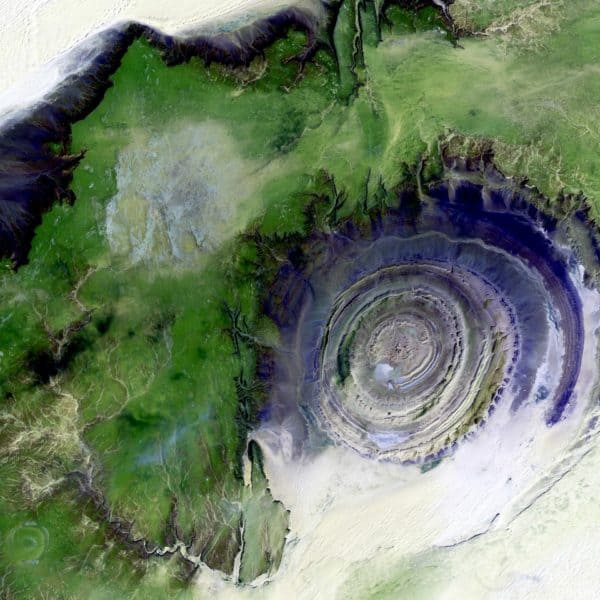
As we deal with urban projects, we use satellite and aerial images as a basis for further analysis and planning. The same goes for natural landscapes and autonomous vehicles. But raw images remain useless if we don’t go into detail. We should put metadata and label them for further machine learning (ML) and geographical information systems (GID) usage.
That’s where geospatial annotation comes in handy. Precise annotation is pivotal in enhancing data quality. It facilitates complex analyses and improves predictive capabilities in various geospatial projects. Let’s go into more detail.
What’s the Importance of Geospatial Data Annotation?
Geospatial images usually come in different formats and contain various properties. To manage these complexities and extract only what is needed for further machine learning applications, we refer to geospatial AI. It directly impacts how we later use this data. Do we further analyze it in disaster management or autonomous navigation? Based on the task, we’ll adhere to different data annotation techniques.
Data Complexity and Scale
What differentiates geospatial data is that it comes in massive volumes and may differ in formats. For example, satellite imagery and drone footage produce high-resolution raster data. It requires meticulous labeling to identify specific features. LiDAR scans generate dense point clouds representing 3D environments. It necessitates advanced annotation techniques to distinguish between different objects and structures.
Need for Precision
Accurate geospatial annotation is crucial, especially for quick decisions. It ensures reliable analysis in emergencies or real-time vehicle navigation. It’s one of the factors that increases the performance of ML models. Additionally, it helps improve the overall efficiency and safety of systems that rely on geospatial data.
Key Applications
The applications of GIS AI cover many industries, each benefiting in its own way from improved data interpretation.
Autonomous Vehicles
In autonomous vehicles, geospatial annotation helps machines navigate in the space. We annotate road and traffic signs, buildings, and pedestrians, to name just a few. With this data, we create detailed maps that later help vehicles to accomplish efficient travel. Besides, if trained correctly, machine learning algorithms can classify objects. Vehicles thus adhere to traffic regulations.
Urban Planning
With annotating satellite images, urban planners can identify land use patterns. They monitor urban sprawl and optimize infrastructure development. As a result, cities become more sustainable, with smart urban planning and resource allocation. Such data is also useful for creation of virtual replicas, also known as smart cities. For example, they help improve IoT sensor placement or emergency response systems.
Advanced annotation technologies, such as AI-powered segmentation, streamline urban planning projects. They automate the identification of urban features, thus saving time and resources.
Environmental Monitoring and Agriculture
In this area, accurate geospatial data contributes to better resource management. In agriculture, farmers can keep an eye on crops and kettle. The efficiency of managing irrigation system increases, while also increasing sustainable farming practices. With elaborate machine learning algorithms, specialists can track environmental changes. Examples include deforestation, which necessitates proactive measures.
Disaster Management
Annotated data in disaster scenarios is key to effective response efforts that can potentially save lives. Annotated data helps to differentiate damaged infrastructure and affected areas. This contributes to more accurate assessment of the need for emergency services. The examples of its application can be assessment of such disasters as floods or earthquakes.
Annotated historical data allows for modeling potential future disasters. This aids in risk mitigation and preparedness strategies. Accurate predictions enable governments and organizations to implement preventive measures.
Military and Defense
In military, annotated data helps track military assets. It also helps assess terrain and improve battlefield intelligence. Thanks to precise annotation, data becomes more accurate. This is especially useful in mission-critical situations. With precise annotation, not only can we detect potential security threats. We can also advance in mapping battlefields, tracking enemy movements, and planning logistics.
Annotation Techniques
Various techniques are employed for geospatial data labeling. Some common ones include:
- Semantic segmentation. Labels each pixel in an image to differentiate land cover types and objects. It captures details like buildings, roads, and more. It’s used for mapping environments, analyzing infrastructure, and classifying agriculture.
- Bounding box annotation. With rectangular boxes around objects of interest, this type is used to detect objects. This labeling helps detect pedestrians for autonomous vehicles. Or else, we use it to track movements in surveillance applications.
- Polygon annotation. With polygon annotation, it’s possible to precise the exact shape and size of the object. It’s applicable in cases where there is need to map irregular shapes, like water resources or agricultural fields. It is applicable in both urban planning and disaster management. We also use it in agriculture and environment monitoring.
- Object detection and classification. Includes detecting buildings, vehicles, or other features for various analytical purposes. The examples of tasks include recognizing road signs and target identification.
- Keypoint annotation. Marks specific points of interest on objects to capture their shape or structure. Used in applications like structural analysis of buildings. It identifies facial features in security systems or maps the positions of utility fixtures.
Challenges in Geospatial Data to Consider
Managing large datasets with multiple layers is complex. Advanced tools and methodologies are required to handle and annotate this data effectively. That’s why focusing on the accuracy of annotations is critical. It can be achieved through cross-validation and peer review techniques. This is especially needed in domains where mistakes can have serious repercussions.
Incomplete or biased data can lead to flawed models and analyses. Recognizing and mitigating biases in data annotation is crucial for fair and accurate outcomes. This is particularly indispensable in social geography or disaster management.
Final Thoughts

With geospatial data annotation, technologies advance across diverse fields. These include autonomous driving and environmental conservation, among others.
As new tools and techniques emerge, they offer the potential to improve both accuracy and scalability. Specialists are encouraged to adopt these innovative methodologies. They thus actively engage in refining annotation processes. By doing so, they will help address the evolving challenges in the rapidly growing geospatial domain and ensure its continued progress.
 Gearfuse Technology, Science, Culture & More
Gearfuse Technology, Science, Culture & More


